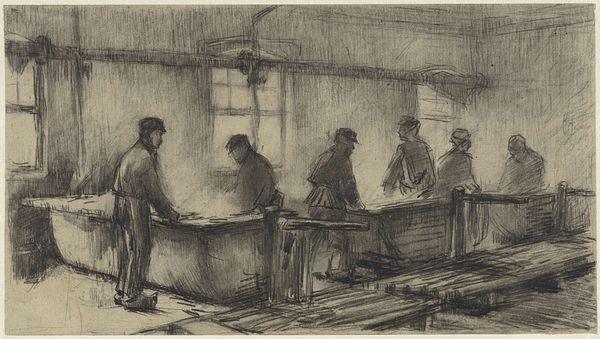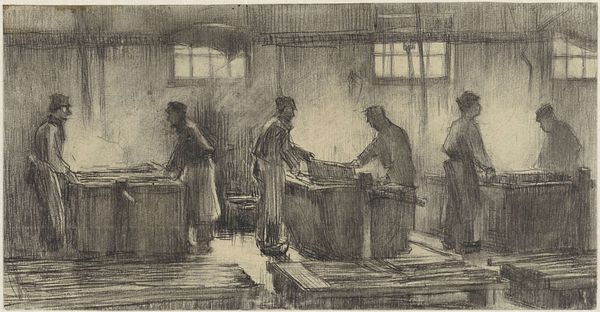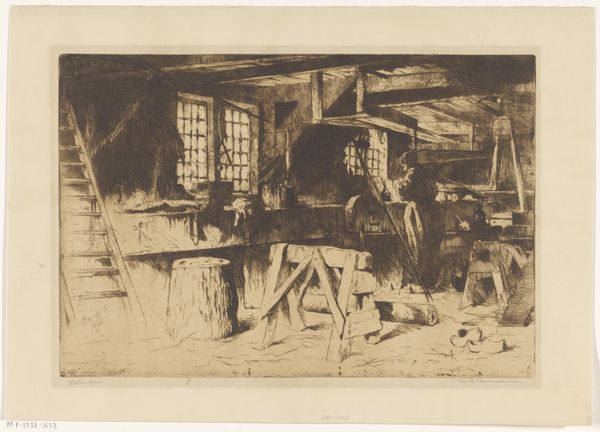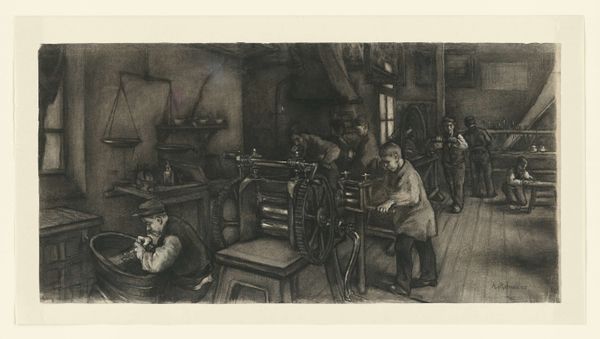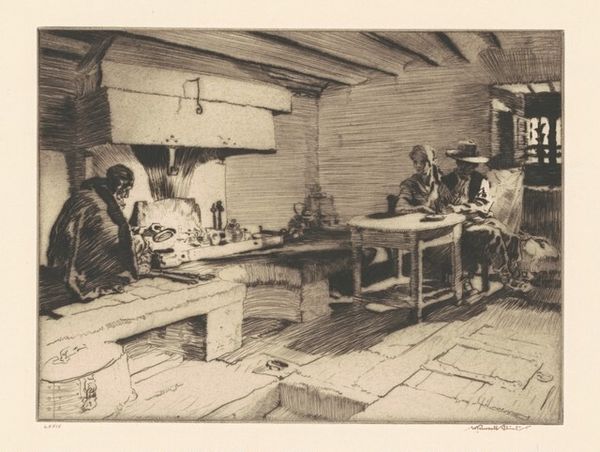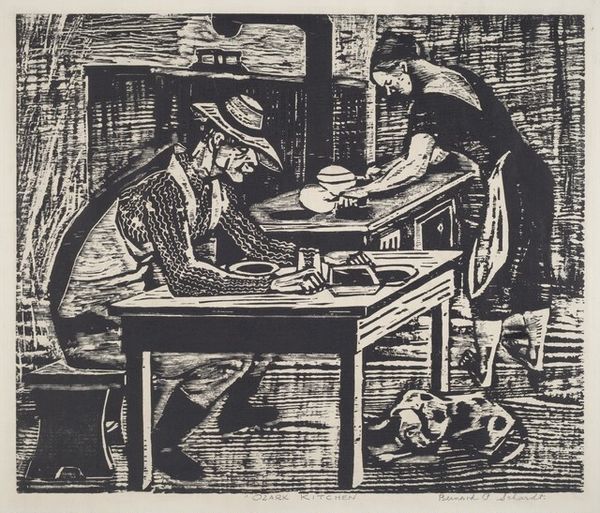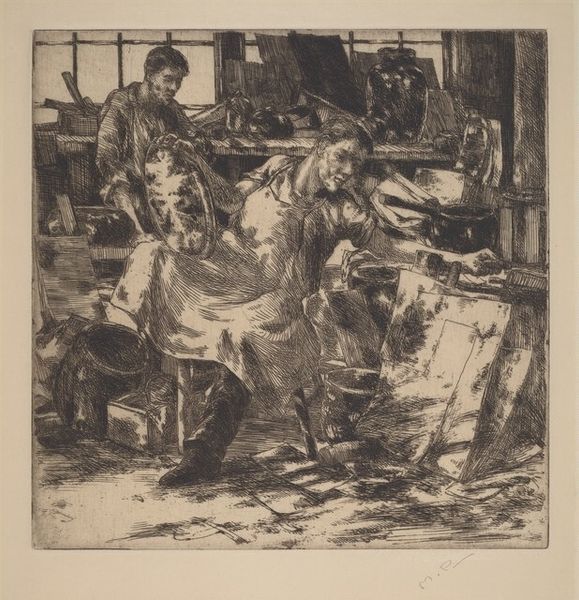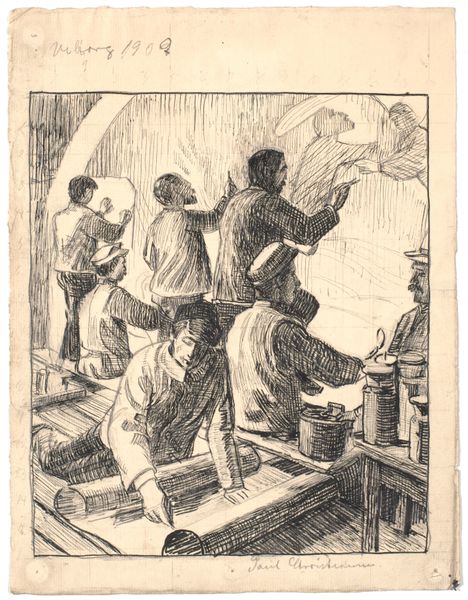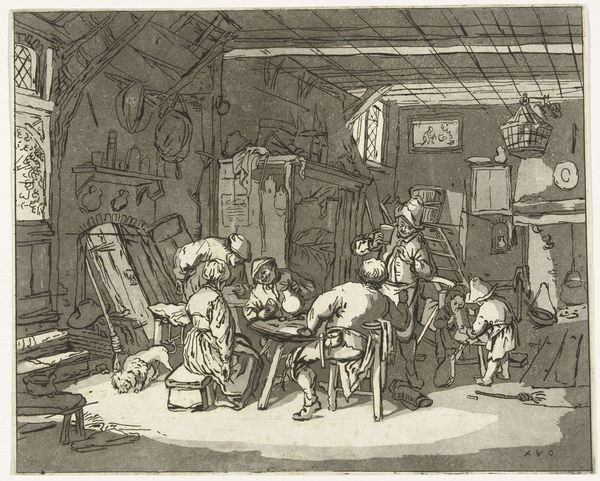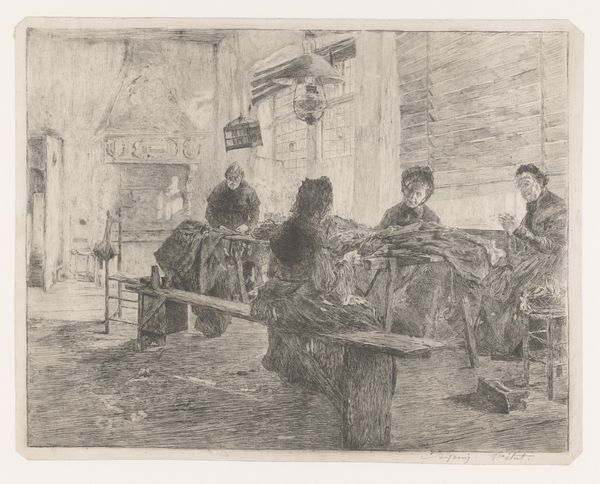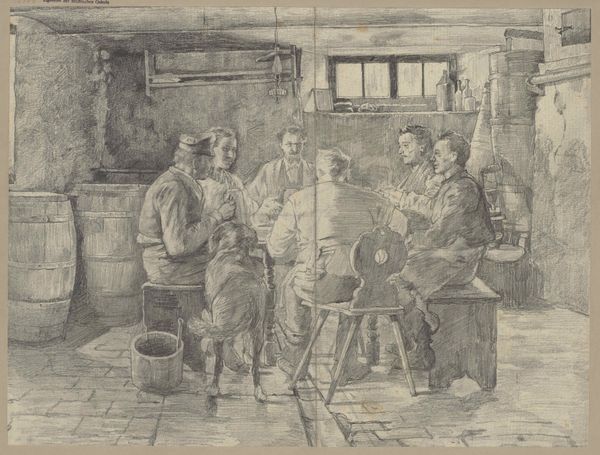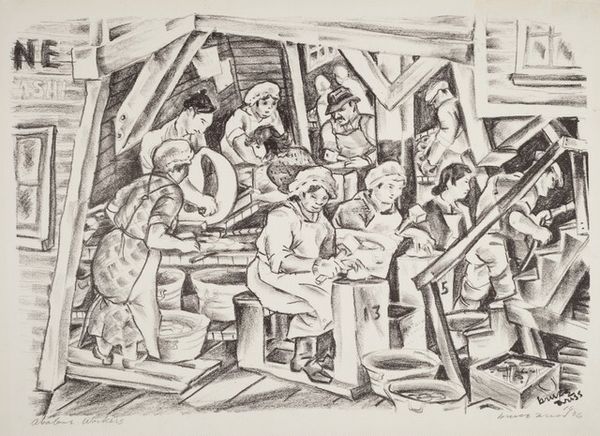
Dimensions: Image: 184 x 238 mm Sheet: 237 x 299 mm
Copyright: National Gallery of Art: CC0 1.0
Curator: This is Jeannette Maxfield Lewis's 1934 print, "Abalone Pounders". Editor: It’s quite striking, a monochrome study of repetitive labor. The textures, even in this simple palette, seem almost palpable. The rhythmic arrangement of the figures really dominates the composition, doesn't it? Curator: Indeed. Lewis's work often depicted scenes of everyday life, particularly focusing on labor and industry. As you noticed, here we see women engaged in what was a common task at the time. It’s worth noting how her prints, engravings, and drawings provided a visual record of women's work and contributions to the Californian economy. Editor: I’m drawn to the geometric interplay. The squares and rectangles of the structures against the more organic, rounded shapes of the figures and tools. It creates a powerful visual contrast, a tension between the human element and the constructed environment. Semiotically, you could read it as a comment on the mechanization of labor… Curator: I find that a valid, if perhaps overstated, point. In reality, while she does showcase the uniformity and, dare I say, exploitation of such working conditions, I hesitate to overlay it with twenty-first century semiotics. Lewis seems intent on rendering the work and process rather than leveling judgements. The way the figures blend into the industrial architecture also highlights the reality of how people were integrated within these economies. It gives visibility. Editor: Still, that contrast is essential to understanding the visual and emotional impact. The limited tonal range reinforces the atmosphere of austerity and relentless routine. Curator: From a materialist perspective, we have to consider how printmaking itself allowed these images to circulate widely. This potentially democratized representation, enabling these images of women’s labor to reach wider audiences beyond the confines of the art world. Editor: Perhaps her dedication to depicting these subjects offers another layer of interpretation. We can see it both as observational recording but also a symbolic commentary on a very specific form of labor. Curator: So, reflecting on Lewis’s "Abalone Pounders," we find ourselves appreciating not just the aesthetics but its function as a mirror of societal values of the time. Editor: Yes, revealing complex layers of meaning embedded in this stark image. A successful blend of form and message, wouldn’t you say?
Comments
No comments
Be the first to comment and join the conversation on the ultimate creative platform.

